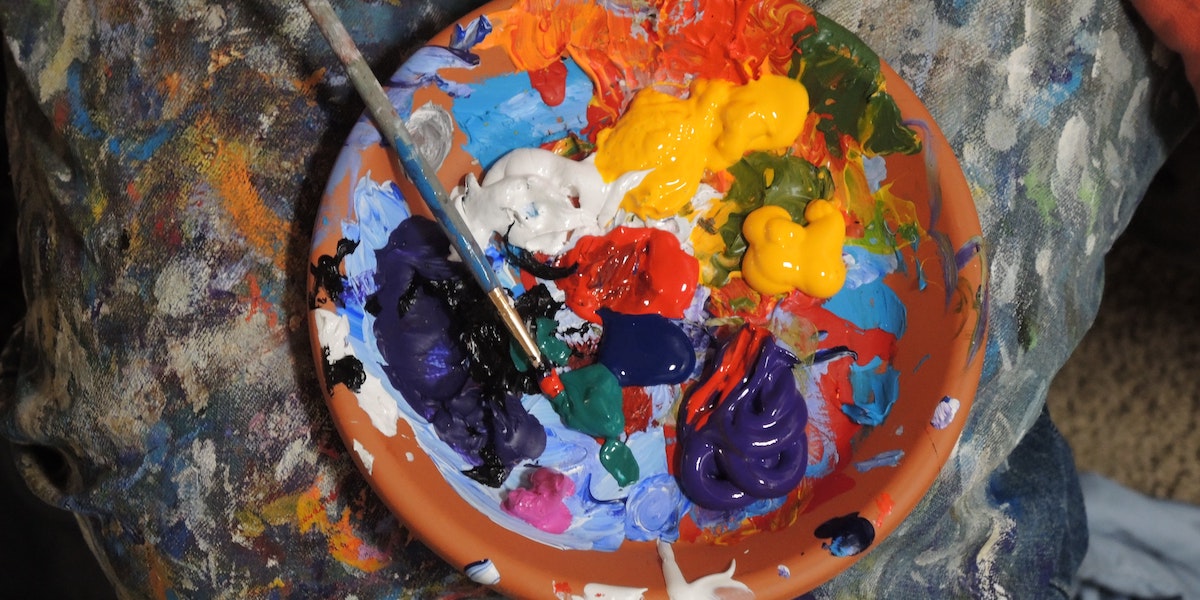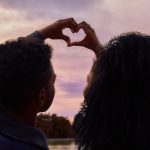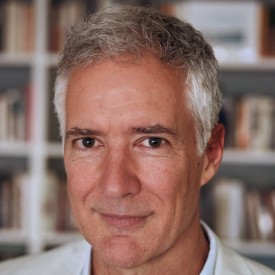Editors’ Note: We at the Next Big Idea Club are fond of featuring “Book Bites,” five key insights from the latest groundbreaking books, as prepared by the authors themselves. Following the release of Walter Isaacson’s latest work, The Code Breaker: Jennifer Doudna, Gene Editing, and the Future of the Human Race, we commissioned a special Book Bite for our readers. Below, Walter has prepared five big ideas that span his entire career as a biographer, from his work on Leonardo da Vinci and Benjamin Franklin to Steve Jobs and, now, Jennifer Doudna. Enjoy!
Jennifer Doudna is one incredible innovator. She just won the Nobel Prize in Chemistry, she helped figure out the gene-editing technology CRISPR, and she’s been leading the fight against the coronavirus. (She’s also an all-around cool person.)
I’ve written biographies of Einstein, Benjamin Franklin, Steve Jobs, Leonardo da Vinci, and now Jennifer Doudna, and you’ll realize that they’re all really smart people. But as it turns out, that’s not the most remarkable thing about them. Smart people are a dime a dozen—they don’t usually amount to much. What really matters is to be imaginative, to be creative, “To be able to think different,” as Steve Jobs would say. So here are five insights from my books on how to do just that.
1. Be passionately, playfully curious.
The good news here is that we can all be this way. Maybe we’ll never be like Einstein, and have the mental processing power to figure out the equations of general relativity. And we may never understand microbiology the way my new hero, Jennifer Doudna, does. But Doudna used to wander around when she was a kid, looking at the sleeping grass in Hawaii; she would touch it and wonder, “Why does it curl up like that?” She’d also find shells on the shore and wonder about the spiral. That was just pure curiosity, and it reminded me of Leonardo, who used to collect shells too, and figure out their spirals.
When we are in our wonder years, we always ask these questions—up until some grown-up finally says, “Hey, quit asking so many stupid questions!” But what we have to do is be like Leonardo da Vinci, Ben Franklin, Steve Jobs, and Jennifer Doudna, and not outgrow our wonder years.
“Wander around and be curious. Ask about the obvious things around you.”
I remember stumbling across a notebook entry in Leonardo’s notebook about, “Why is the sky blue?” And he did all these experiments, spraying water in the air to try to figure it out. And I realized I’d seen this same thing in Einstein’s notebooks—“Why is the sky blue?” You and I see the blue sky almost every day, and we’ve quit wondering about what makes it that way. But not Jennifer Doudna—she also wondered about the blue sky, the green ocean, and what life exactly is.
That’s the insight I get from all of these people: Wander around and be curious. Ask about the obvious things around you.
2. Be useful.
Curiosity is fine—it’s cool to always be curious about things. But it’s even cooler to try to connect them to something useful. As they say in Jennifer Doudna’s world, “Move it from bench to bedside.” In other words, transform it from a lab discovery into something that can be applied to patients to make them better. That’s what she did when she understood RNA. She helped figure out the structure of RNA as a curiosity-driven thing. But once she succeeded, she used RNA as a guide to edit genes, and we’re now also using it as a messenger, to tell our cells how to make certain proteins that will stimulate our immune system against coronavirus.
When he was looking at sparks and electricity, Ben Franklin wrote in his notebook, “What good is it? We have to find something useful for it.” And then one day, he flew a kite in the rain and realized that lightning is like a spark, and you could draw it down from the clouds with a lightning rod. So the thing that all of these creative people do is say, “Hey, how can we apply this?”
For Jennifer Doudna, that aha moment came when she realized that she had discovered the components for a tool that could cut DNA at a targeted spot. She and her colleagues said, “This means humans will be able to edit their genes!”
“The thing that all of these creative people do is say, ‘Hey, how can we apply this?’”
3. Know when to compete—and when to cooperate.
Competition draws us to do amazing things. Steve Jobs was a competitive person—he fought like hell with Bill Gates, especially when Gates tried to use a Windows operating system that Steve thought looked too much like the Apple graphical user interface. They fought each other, they got into lawsuits, and Microsoft even quit making some products for the Apple computer.
But after being ousted from the company, Steve returned to Apple in the late 1990s, and he was a little bit mellower. The first call he made was to Bill Gates, and he said, “Come down for a visit. Let’s take a walk, shake hands, and settle our differences.” And they did; Microsoft actually became a big supporter of Apple.
The same thing happened with Jennifer Doudna and her team. In 2012, they were racing against a group at MIT and Harvard, which included a wonderful guy named Feng Zhang. The components of CRISPR were discovered by Jennifer Doudna, but they were all trying to figure out how to make it a tool that could work in human cells to edit human DNA. And in January 2013, both teams finished at about the same time. (Actually, Zhang published a couple of weeks earlier.) But they both got patents, and they’re still fighting a patent battle over that.
Now, patents are important; they are the way you get rewarded for discovering things. However, at a certain point, you’ve got to shake hands and say, “Let’s quit divvying up the proceeds before we finish robbing the stagecoach.” In other words, “Let’s make a deal to make this wonderful discovery something that a lot of people can use.” That’s what Texas Instruments and Intel did on the microchip. And it’s what I hope Jennifer Doudna’s crew and Feng Zhang’s crew do someday on the CRISPR patents.
“When she was in school, Jennifer Doudna’s guidance counselor told her that girls don’t do science. But she decided she would anyway . . . and she went on to win the Nobel Prize.”
But when the coronavirus struck, what both of their teams did was apply their knowledge to detecting COVID-19. Because CRISPR is something that bacteria have been using for a billion years in their fight against viruses. CRISPR is a way that bacteria take a mugshot of viruses that have attacked them in the past, and they put them in clustered, repeated sequences in their DNA. That way, if that virus attacks again, they can chop it up. And that’s kind of what we need in this day and age of virus attacks.
So what Jennifer Doudna’s and Feng Zhang’s teams did was say, “Let’s all turn our attention to using these tools to fight COVID.” And they put all of what they discovered in the public realm, allowing other people to use it and build upon it. They didn’t try to get patents when it came to fighting COVID—they collaborated, and they built on each other’s research.
4. Persist.
When she was in school, Jennifer Doudna’s guidance counselor told her that girls don’t do science. But she decided she would anyway—she persisted. And of course, she went on to win the Nobel Prize. Steve Jobs was similar. Whenever somebody told him something was impossible, he persisted. His colleagues called it Steve’s “reality distortion field.”
Even early on, before they founded Apple, he and Steve Wozniak were working the night shift at Atari, and they had to code a single-player game called Breakout. And Steve Jobs said to Woz, “Hey, you’ve got to do it by the weekend, so we can go back to the apple farm where we’ve been working.” (Hence the name of the company they founded.) And Woz says, “Man, it’s going to take me more than three days—it’ll take a few weeks! I can’t do it that fast.” But Steve had gone to India and learned from his guru to stare without blinking. And he kept saying to Woz, “Don’t be afraid. You can do it.” And boom, Woz stayed up three nights in a row, and we got the game of Breakout.
“Life is about . . . the ideas that you contribute for future generations, the products you make that will make other people’s hearts sing.”
The same thing happened with the board inside the Apple Macintosh. Steve thought it was ugly, and he wanted his engineers to fix it, because he believed you have to have beauty even in the parts unseen. So he kept staring at them saying, “Don’t be afraid. You can do it.” Two or three decades later, he was still doing that, even to Corning in order to get the glass he wanted for the iPhone.
As for Jennifer, she wasn’t invited into the mainly male club of people sequencing DNA for the Human Genome Project. So she approached her work as if she were playing soccer; she says that when she plays soccer, she plays the positions that others don’t play. In this case, she decided to focus on RNA with two accomplished women, Jillian Banfield at Berkeley and Emmanuelle Charpentier from Europe. And it turns out that RNA is a far more interesting molecule than DNA. DNA just sits in the nucleus of our cells and curates information—it doesn’t really go out and do anything. But RNA takes that information, goes to the outer regions of the cell, and oversees the building of proteins. That’s why we can use RNA as a messenger in vaccines, or as a guide for CRISPR gene-editing tools. This group persisted in studying RNA, and in October of 2020, it was two women, Emmanuelle Charpentier and Jennifer Doudna, who won the Nobel Prize in Chemistry.
5. Connect technology to humanity.
There’s a moral component to all of this; it’s bigger than just making gadgets and making money. After she cracked the code and was able to create this gene-editing technology, Jennifer Doudna had a nightmare. In the dream, she was brought into a room by somebody who wanted to use her technology. When the person looked up, Jennifer realized it was Adolf Hitler.
So Jennifer decided to dedicate the next few years of her life to gathering scientists from around the world, and getting some rules in place—guidelines for questions like, “When do we edit our genes, and when don’t we? Should we make inheritable edits to unborn children? When should we use CRISPR to fight diseases? And should we use it to enhance our children, like making them taller, smarter, more muscular, or with a certain hair color?”
“The truth is, everybody’s got a silly little passion, and anybody can follow it. Instead, it’s all about connecting your passion to something larger than yourself.”
All of these questions are moral issues that we will have to face in the next 20 years. And by “we” I mean you and me—we can’t leave this to the scientists and politicians. It’s got to be up to people who know how to connect technology to humanity. Steve Jobs did that every time he launched a product. The slide at the end of the product launch was always about the intersection of the liberal arts streets with the technology streets. And he said, “Those who can stand at that intersection are those who will have technology that will make our hearts sing, that will connect to us emotionally, that will be good, that will be kind.” Yes, he used the word “kind” to talk about technology. And then there’s the symbol of Leonardo da Vinci’s Vitruvian Man, the nude guy doing jumping jacks in the circle and the square. That’s actually a self-portrait of Leonardo standing on the earth, and in the cosmos, and in the spirituality of our existence saying, “How do I fit in?”
When scientists started fighting the coronavirus, they started sharing their intellectual property. And when they started worrying about the morality of biotechnology and genetic engineering, that’s when they reminded themselves and future generations that research science is a noble pursuit. I once asked Steve Jobs at the end of his life, “How are you going to be remembered? What is your legacy?” And he said, “Life is like a river. I used to think that your legacy is what you got to take out of the river—all of the things you made and acquired, all the goodies you got, all the things you learned. But now, I realize that life is about what you get to put into the river—the ideas that you contribute for future generations, the products you make that will make other people’s hearts sing.”
That’s what people like Jennifer Doudna do. They’re creating technologies that will help humanity. And even though they sometimes do it for prizes and for patents, in the end, for a person like Jennifer Doudna, it’s not about following your passion, as some graduation speeches say. The truth is, everybody’s got a silly little passion, and anybody can follow it. Instead, it’s all about connecting your passion to something larger than yourself. That’s what everybody I wrote about did, from Steve Jobs to Ben Franklin, to Albert Einstein and Leonardo da Vinci, and now to Jennifer Doudna—who has created tools that will make us healthier, will keep our children safer, and will help build a better human race.
For more Book Bites, download the Next Big Idea App today:

































